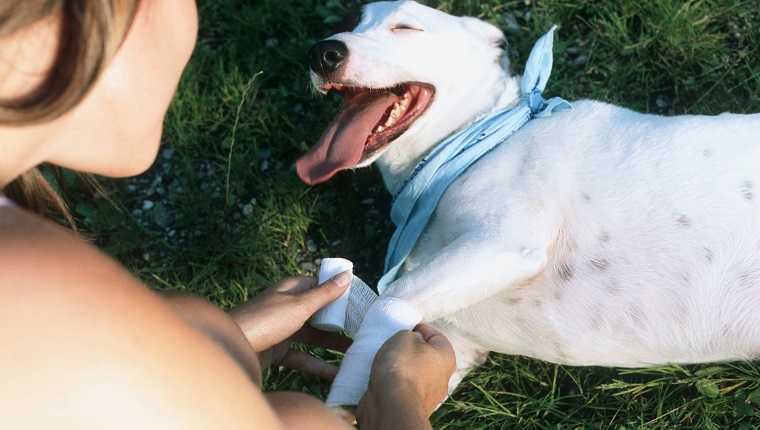Minor wounds on dogs can occur for a wide range of reasons and can happen at many times during our pets’ daily routines. Some examples of small wounds that might afflict your dog include cuts, bites, and scratches that cause some bleeding.
Very active dogs who spend a lot of time outdoors can also be more prone to picking up minor wounds than those who lead a more leisurely lifestyle. Thankfully, in many cases, these wounds will heal themselves, and sometimes treating a dog’s superficial wounds can be as much a case of monitoring the injury as providing hands-on care.
If you see the signs of a wound on your dog that is not healing or seems to be getting infected, then you must get to a veterinarian for a proper diagnosis and treatment. Here’s what you should know about the symptoms, causes, and treatments for minor wounds on dogs.
Symptoms Of Minor Wounds On Dogs
Symptoms of minor wounds on a dog can present themselves in a range of forms.
Some of the most common smaller wounds on dogs include:
- Cuts
- Bites
- Scratches
- Surface injuries that produce bleeding
You may notice skin around the affected area swelling, appearing red or inflamed, or bruising. If the skin breaks, some minor bleeding may also appear.
Causes Of Minor Wounds On Dogs
The causes of minor wounds on dogs could come from many different scenarios, and in a lot of cases, a dog’s human might never find out the source of the wound.
In some instances, your dog might interact with another canine who ends up giving them a bite or a scratch. Other times, simply going for a walk through more rugged terrain could wind up causing minor wounds on your dog.
Treatments For Minor Wounds On Dogs

If you suspect that your dog is suffering from a minor wound, then the first thing to do is to examine the affected area. This is so that you can assess the severity of the wound and decide whether you can treat at home or if it’s something more serious that will require a visit to a veterinarian.
In many cases, using a muzzle on your dog can help make the examination stage easier.
When examining the wound, it’s important to look out for bleeding. If you see blood, use a clean medical gauze pad and a gentle amount of pressure on the wound to help stop the bleeding.
Next, clean the wound with an antibacterial product that’s safe for use on dogs. Your vet can advise you on appropriate brands if needed. Follow the product’s cleaning instructions and adhere to the frequency of cleaning suggested.
While examining and cleaning the wound, look to see if there are any signs of infection or if there are any foreign objects that have made their way into the wound. These will usually require a veterinarian’s help to remove safely and cleanly. If in doubt, don’t attempt the process yourself.
In many cases, wounds will heal on their own at this point, just like a bruise or a small cut that a human might suffer from. But it’s important to keep checking the wound to be certain that it hasn’t become infected, isn’t swelling up, and isn’t getting worse in any way. Taking pictures can help you judge to see if a minor wound is becoming worse.
The golden rule is that if the wound seems to be getting worse, then call your vet straight away.
Has your dog ever suffered from a minor wound? Did you treat it with any first aid? Let us know in the comments section below!










